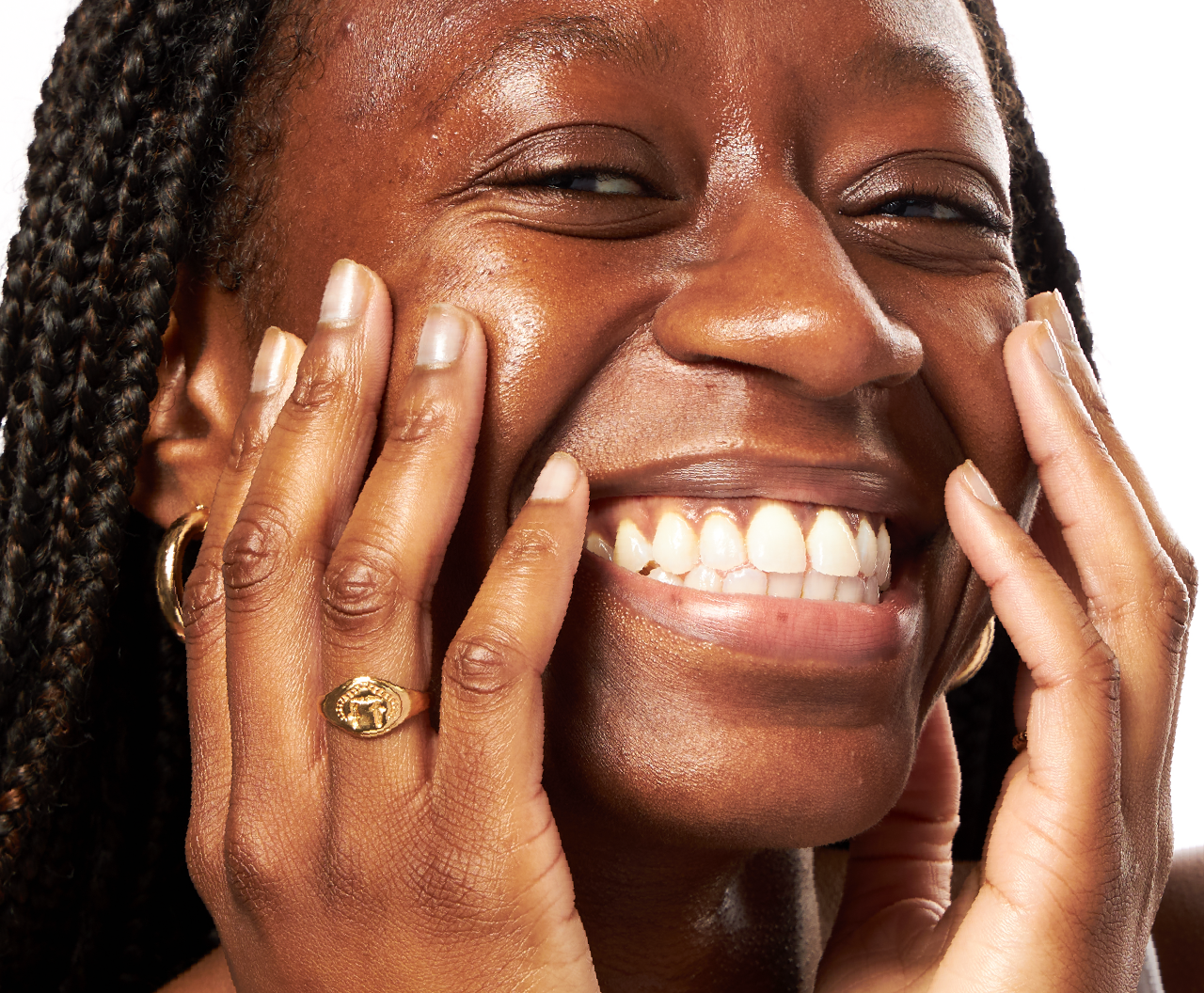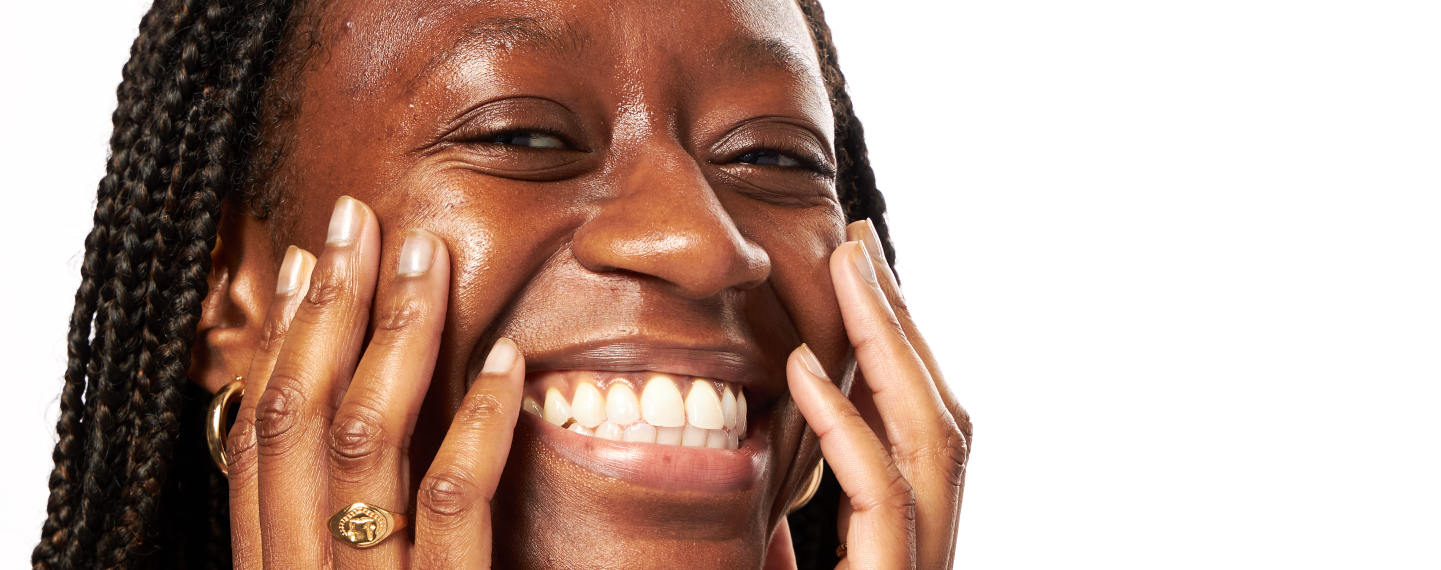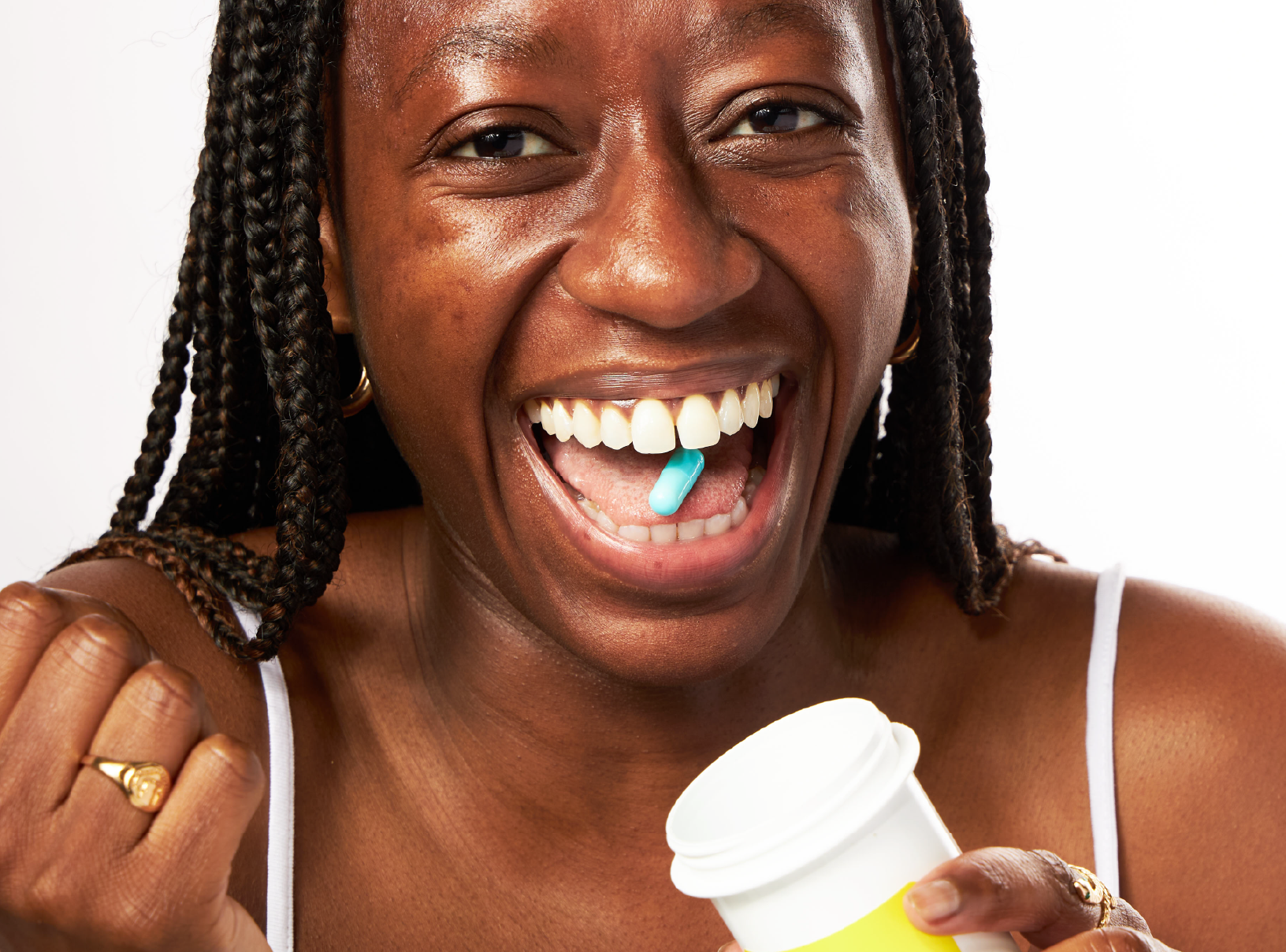Education
How to get a clear face


SHARE
Education
How to get a clear face
Medically reviewed by Vicky Davis, FNP
Written by Apostrophe Team
Last updated 4/1/2024
A clear face is highly sought-after but often elusive. There’s no such thing as perfect skin but we can work towards healthy, glowing skin. With so much conflicting advice and so many different acne products out there, it’s hard to find the right skin care regimen for you.
And that’s exactly why we compiled this list of clinically-proven and dermatologist-approved tips for clear skin.
Wash Your Face
Washing your face is a critical component of a good skincare routine. Facial acne occurs when the pores on your face become clogged, so you should regularly cleanse your face to remove debris, dead skin cells, bacteria, sweat, and excess oil to prevent acne from developing. When washing your face, stick to the following guidelines for the best results:
Use a mild cleanser: Choose a gentle cleanser that will wash your face without stripping your face of healthy oils. Avoid harsh soaps, which can cause dryness and irritation.
Don’t wash too often: It might seem counterintuitive, but washing your face too frequently can actually lead to more breakouts — so try to just wash your face in the morning, at night, and after sweating heavily.
Not too hot, not too cold: The American Academy of Dermatology Association recommends using lukewarm water to wash your face.
Don’t scrub: When it comes to washing your face, harder doesn’t mean better — vigorously scrubbing your face can cause irritation and even aggravate acne. Gently wash your skin with your fingers, then pat your face dry.
Moisturize
You might think that moisturizing your face could worsen acne, but it’s often helpful in maintaining a clear face. When your skin is too dry, your body may try to compensate by producing extra oil which can, in turn, clog pores and cause acne.
Dry skin can be caused by a number of different factors, including low humidity, hot showers, nutritional deficiencies, medical conditions, and certain medications. Some products commonly used to treat acne can also cause dryness, such as:
Benzoyl peroxide
Salicylic acid
Adapalene
Tazarotene
Isotretinoin
When selecting a facial moisturizer, be sure to choose one that’s acne-friendly. Products that are well-suited for acne-prone skin will often contain phrases like “oil-free,” “non-comedogenic” or “won’t clog pores” on their labeling.
Topical Acne Treatments
There are a number of different topical acne treatments available both over-the-counter and by prescription in a variety of different forms, from cleansers to gels to creams to masks and more.
A few common active ingredients in these products include:
Benzoyl peroxide: Benzoyl peroxide has been a mainstay acne treatment for decades. It works as a peeling agent and antibiotic while preventing pores from clogging.
Salicylic acid: Salicylic acid unclogs pores, fights inflammation, and promotes exfoliation.
Retinoids: Topical retinoids, including tretinoin, adapalene, and tazarotene, prevent pores from clogging, fight inflammation, and reduce oil production.
Antibiotics: Topical antibiotics like erythromycin and clindamycin kill the bacteria that contribute to acne.
Azelaic acid: Azelaic acid works as a peeling agent and antibiotic, and prevents pores from clogging.
Combinations: Many products use a combination of these and other active ingredients, like Apostrophe topical treatments.
The most effective products and ideal ingredient concentration vary widely from person to person, so talk to a dermatology provider about what would work best for you.
Oral Acne Medications
For stubborn cases of acne (particularly nodular or cystic), dermatologists sometimes recommend oral acne medications such as:
Antibiotics: Prescription-level antibiotics kill the bacteria that cause acne to form. They are often prescribed in tandem with benzoyl peroxide creams to avoid antibiotic resistance.
Hormonal therapy: Women with persistent acne on their lower face, neck, chest, and back may benefit from taking birth control pills or spironolactone — men, however, are not typically prescribed these medications as they can cause unwanted side effects like breast development. These medications work by reducing the amount of androgens in the body, hormones that stimulate oil production.
Isotretinoin: Isotretinoin is a powerful oral retinoid that reduces oil production, clears pores, kills bacteria, and fights inflammation. It can have serious side effects in women, like birth defects, miscarriage, and stillbirth. Women on isotretinoin must be on two different forms of birth control and regularly take pregnancy tests. Isotretinoin can also cause dry skin, dry mouth, dry eyes, nosebleeds, and sensitivity to the sun.
Other Treatments
Severe acne and acne that has not responded well to previous treatments may require alternate or additional acne-fighting methods. A few common clinical techniques include:
Laser/light therapy: As you can probably tell from its name, this therapy involves the targeted exposure of acne to lights and lasers, either in a clinic or with an at-home device. There are several different types of lasers and lights used for treatment, such as blue light, red light, blue and red light, infrared light, and photodynamic therapy. Laser and light therapy is often recommended in conjunction with other treatments, like topical products, as it often clears skin only partially on its own.
Acne removal procedures: Common acne removal procedures include acne extraction, in which doctors use sterile equipment to remove acne; incision and drainage, in which doctors use a sterile needle or blade to open up a lesion and remove its contents and corticosteroid injections, in which a medicine such as triamcinolone is directly injected to the affected area to reduce healing time.
Chemical peels: Chemical peels involve applying acid, like salicylic acid or glycolic acid, to slough away dead skin cells. Lower-strength chemical peels can be done at home with an over-the-counter product or by a licensed esthetician/cosmetologist, but more powerful chemical peels must be administered by medical professionals.
Lifestyle Tips
A healthy skin care routine involves more than just washing your face and applying products. There are a handful of different lifestyle choices you can make to help clear your skin:
Eat healthy: There’s evidence that a high-glycemic diet — that is, a diet full of simple carbohydrates like white rice, sweets, and white bread — may worsen acne. Dairy may also exacerbate acne, although likely to a smaller degree.
Don’t touch, pick or pop: Squeezing blemishes can make your acne worse by pushing the contents deeper into your skin, causing inflammation. Try to avoid touching your face altogether.
Choose acne-friendly products: Hair and skin products with heavy oils or other acne-aggravating ingredients can cause breakouts. Remember to look for the phrases “oil-free,” “non-comedogenic,” or “won’t clog pores” on labels.
Be smart about makeup: Makeup can worsen acne in a few different ways. As mentioned above, some makeup contains ingredients that exacerbate acne. But even if you use products without these ingredients, sleeping in makeup can exacerbate acne. You should also make sure to clean your makeup brushes and never share them to avoid transferring acne-causing oils and bacteria.
Don’t smoke: Some research has shown that smoking can worsen acne by changing the composition of sebum — your skin’s natural oils.
The Bottom Line on Keeping Your Face Clean
Acne can be a frustrating condition. It can negatively affect your self-image and confidence, and may even be painful. But the good news is, there are a lot of things you can do to achieve and maintain clear skin. With a healthy skin care routine, the right treatments, and smart lifestyle choices, you can significantly reduce your risk of breakouts — and if you need some advice and assistance along the way, dermatologists will be happy to help.
References
Acne: Who Gets and Causes. (n.d.). Retrieved from https://www.aad.org/public/diseases/acne/causes/acne-causes
Goodman, G. (2009) Cleansing and Moisturizing in Acne Patients. American Journal of Clinical Dermatology, 10, 2. Retrieved from https://link.springer.com/article/10.2165/0128071-200910001-00001
Ananthapadmanabhan, K. P., Moore, D. J., Subramanyan, K., Misra, M., & Meyer, F. (2004). Cleansing Without Compromise: the Impact of Cleansers on the Skin Barrier and the Technology of Mild Cleansing. Dermatologic Therapy, 17, 20. Retrieved from http://www.scientificspectator.com/documents/personal%20care%20spectator/Cleansing%20without%20Compromise.pdf
10 Skin Care Habits That Can Worsen Acne. (n.d.). Retrieved from https://www.aad.org/public/diseases/acne/skin-care/habits-stop
Face Washing 101. (n.d.). Retrieved from https://www.aad.org/public/everyday-care/skin-care-basics/care/face-washing-101
Mukhopadhyay P. (2011). Cleansers and Their Role in Various Dermatological Disorders. Indian Journal of Dermatology, 56(1), 2–6. Retrieved from https://www.ncbi.nlm.nih.gov/pmc/articles/PMC3088928/
Moisturizer: Why You May Need It if You Have Acne. (n.d.). Retrieved from https://www.aad.org/public/diseases/acne/skin-care/moisturizer
Dry Skin: Overview. (n.d.). Retrieved from https://www.aad.org/public/diseases/a-z/dry-skin-overview
Decker, A., & Graber, E. M. (2012). Over-the-counter Acne Treatments: A Review. The Journal of Clinical and Aesthetic Dermatology, 5(5), 32–40. Retrieved from https://www.ncbi.nlm.nih.gov/pmc/articles/PMC3366450/
Salicylic Acid Topical. (n.d.). Retrieved from https://medlineplus.gov/druginfo/meds/a607072.html
Keri, J., & Shiman, M. (2009). An Update on the Management of Acne Vulgaris. Clinical, Cosmetic and Investigational Dermatology, 2, 105–110. Retrieved from https://www.ncbi.nlm.nih.gov/pmc/articles/PMC3047935/
10 Things to Try When Acne Wont Clear. (n.d.). Retrieved from https://www.aad.org/public/diseases/acne/DIY/wont-clear
Russell J. J. (2000). Topical therapy for acne. American family physician, 61(2), 357–366. Retrieved from https://www.aafp.org/afp/2000/0115/p357.html
Oral Medications for Acne. (n.d.). Retrieved from https://nyulangone.org/conditions/acne/treatments/oral-medications-for-acne
Stubborn Acne? Hormonal Therapy May Help. (n.d.). Retrieved from https://www.aad.org/public/diseases/acne/derm-treat/hormonal-therapy
Isotretinoin FAQs. (n.d.). Retrieved from https://www.aad.org/public/diseases/acne/derm-treat/isotretinoin/faqs
Isotretinoin: the Truth About Side Effects. (n.d.). Retrieved from https://www.aad.org/public/diseases/acne/derm-treat/isotretinoin/side-effects
Lasers and Lights: How Well Do They Treat Acne?. (n.d.). Retrieved from https://www.aad.org/public/diseases/acne/derm-treat/lasers-lights
Pimple Popping: Why Only a Dermatologist Should Do It. (n.d.). Retrieved from https://www.aad.org/public/diseases/acne/skin-care/popping
Zaenglein, A. L., Pathy, A. L., Schlosser, B. J., Alikhan, A., Baldwin, H. E., Berson, D. S., Bowe, W. P., Graber, E. M., Harper, J. C., Kang, S., Keri, J. E., Leyden, J. J., Reynolds, R. V., Silverberg, N. B., Stein Gold, L. F., Tollefson, M. M., Weiss, J. S., Dolan, N. C., Sagan, A. A., Stern, M., … Bhushan, R. (2016). Guidelines of Care for the Management of Acne Vulgaris. Journal of the American Academy of Dermatology, 74(5), 962. Retrieved from https://www.jaad.org/action/showPdf?pii=S0190-9622%2815%2902614-6
Lee, K. C., Wambier, C. G., Soon, S. L., Sterling, J. B., Landau, M., Rullan, P., Brody, H. J., & International Peeling Society (2019). Basic Chemical Peeling: Superficial and Medium-Depth Peels. Journal of the American Academy of Dermatology, 81(2), 319. Retrieved from https://www.jaad.org/article/S0190-9622(18)33049-4/pdf
Bowe, W. P., Joshi, S. S., & Shalita, A. R. (2010). Diet and Acne. Journal of the American Academy of Dermatology, 63(1), 138. Retrieved from https://www.jaad.org/action/showPdf?pii=S0190-9622%2809%2900967-0
10 Skin Care Habits That Can Worsen Acne. (n.d.). Retrieved from https://www.aad.org/public/diseases/acne/skin-care/habits-stop
Capitanio, B., Sinagra, J. L., Ottaviani, M., Bordignon, V., Amantea, A., & Picardo, M. (2009) Acne and Smoking. Dermato-Endocrinology, 1(3), 133-135. Retrieved from https://www.tandfonline.com/doi/pdf/10.4161/derm.1.3.9638?needAccess=true
Shop this post

Tretinoin
Like what you just read? Sign up for our email list to get the scoop on skincare science delivered straight to your inbox.

Education
What is milia?
What is milia? Today, we’re jumping into one type of bump that you may have heard about most commonly in infants — milia.
Read More
Education
Best moisturizer for acne-prone skin
If you have combination acne-prone skin, figuring out which moisturizer is best for your skin might be tough. In this guide, we break down the best moisturizer for combination, acne-prone skin.
Read More
Education
How to build a face care routine
As you get into skincare, it might seem overwhelming, especially trying to figure out the order you're supposed to apply products in. Below, we detail how to build a face care routine for your skin!
Read More
